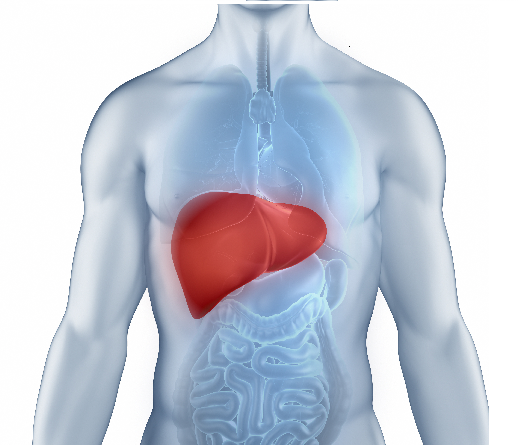Understanding Sepsis: Symptoms, Causes and Diagnosis
- 29 Nov, 2024
- Written by Team Dr Lal PathLabs
Medically Approved by Dr. Seema
Table of Contents

Sepsis is a health crisis that affects millions worldwide. It is a result of an extreme reaction to an infection. While prevalent globally, this life-threatening illness is most common in lower—to middle-income countries, which often have a higher exposure to infection-causing conditions.
This health condition can be fatal if not treated properly and in time. Understanding this illness is important in order to prevent and treat it effectively.
This blog discusses everything one needs to know about this health condition, including what is sepsis, causes of sepsis, signs of sepsis, diagnosis of sepsis and its treatment.
What is Sepsis?
Sepsis occurs when an existing infection instigates an extreme response from the body’s immune system. Typically, the immune system responds to an infection by releasing proteins and chemicals to curb it. When this response is extreme or out of control, sepsis occurs, resulting in extensive inflammation.
While most sepsis infections are caused by bacterial infections, other infections such as influenza, fungal infections, and even COVID-19 can cause sepsis. There are three main stages of sepsis. These include:
• Sepsis: This involves an infection entering the bloodstream and causing inflammation in the body.
• Severe Sepsis: The sepsis infection and inflammation start affecting organ function.
• Septic Shock: This is a serious sepsis complication that causes a drop in blood pressure. It can lead to extreme complications such as respiratory or heart failure, organ dysfunction, stroke, or even death.
What Are the Signs of Sepsis?
Since sepsis can affect any part of the body, its symptoms are varied. For instance, in the case of an infection like septicemia (blood poisoning), the symptoms can be a rash or small dark-red spots on the skin. Some other common signs of sepsis are:
• Reduced energy or weakness
• Low blood pressure
• Fever or hypothermia (extremely low body temperature)
• Chills or shaking
• Sweaty skin
• Confusion and agitation
• Shortness of breath or hyperventilation (rapid breathing)
• Extreme discomfort or pain
• Urinary issues such as reduced or increased urge to urinate
What Are the Causes of Sepsis?
Since sepsis is the immune system’s extreme response to an infection, it can be caused by a bacterial, fungal, or viral infection. A sepsis infection occurs when an infection triggers a reaction across the body and affects organ function.
Further, an infection causing sepsis can originate from any part of the body. Here are some common sites and types of infections that can lead to sepsis:
• Urinary System: Urinary tract infections are highly common in individuals using a catheter.
• Central Nervous System: Infections in the spinal cord or brain can cause sepsis.
• Respiratory System: Infections in the lungs, such as pneumonia, can cause sepsis
• Gastrointestinal System: Bowel problems and infections in the appendix, abdominal cavity, gallbladder, or liver can cause sepsis.
• Skin: Inflammation or openings made for IVs, catheters, and wounds can allow bacteria to enter the body. Additionally, conditions such as cellulitis, which refers to the inflammation of the skin’s connective tissue, can also cause sepsis.
How is Sepsis Diagnosed?
The diagnosis of sepsis involves:
• Blood Tests: Blood samples are examined for evidence of infection, abnormal kidney or liver function, blood clotting problems, electrolyte imbalances, and lower-than-normal oxygen levels.
• Lab Tests: Samples of urine, mucus, or saliva from the respiratory tract and liquid from the wound can be examined to check for a sepsis infection.
• Imaging Tests: X-rays, ultrasounds, Magnetic Resonance Imaging (MRI), and Computerised Tomography (CT), can be used to examine whether the body has a sepsis infection.
Who Is at Risk for Sepsis?
While anyone can suffer from a sepsis infection, the following individuals are a higher risk:
• Young children and the elderly
• Individuals with weak immune systems, including those suffering from HIV or undergoing chemotherapy treatments
• Individuals in Intensive Care Units (ICUs)
• Individuals exposed to invasive medical devices such as breathing tubes and intravenous catheters
How to Prevent Sepsis?
Sepsis can be prevented by:
• Practising good hygiene
• Ensuring cuts and wounds are cleaned and covered
• Staying updated with vaccines
• Ensuring routine medical care for chronic conditions
• Seeking medical attention in case of sepsis symptoms
Sepsis infection develops when an existing infection instigates an extreme response from the immune system. Individuals suffering from the above-mentioned signs of sepsis must consult a healthcare professional and book a Sepsis panel test at Dr Lal PathLabs for accurate and timely diagnosis.
FAQs
1. What are the main causes of sepsis?
Any type of bacterial, fungal, or viral infection can cause sepsis infection. The most common causes include infections in the lungs, urinary system, digestive system, bloodstream, catheter sites or wounds.
2. What are the symptoms of sepsis?
The signs of sepsis include urinary issues (reduced urination or increase in an urge to urinate), low energy, fast heart rate, low blood pressure, fever, chills, sweaty skin, confusion, hyperventilation, and extreme discomfort or pain.
3. Can sepsis be cured?
Yes, sepsis is treatable. Individuals suffering from signs of sepsis must consult a healthcare professional and book necessary tests as soon as possible for timely treatment.














